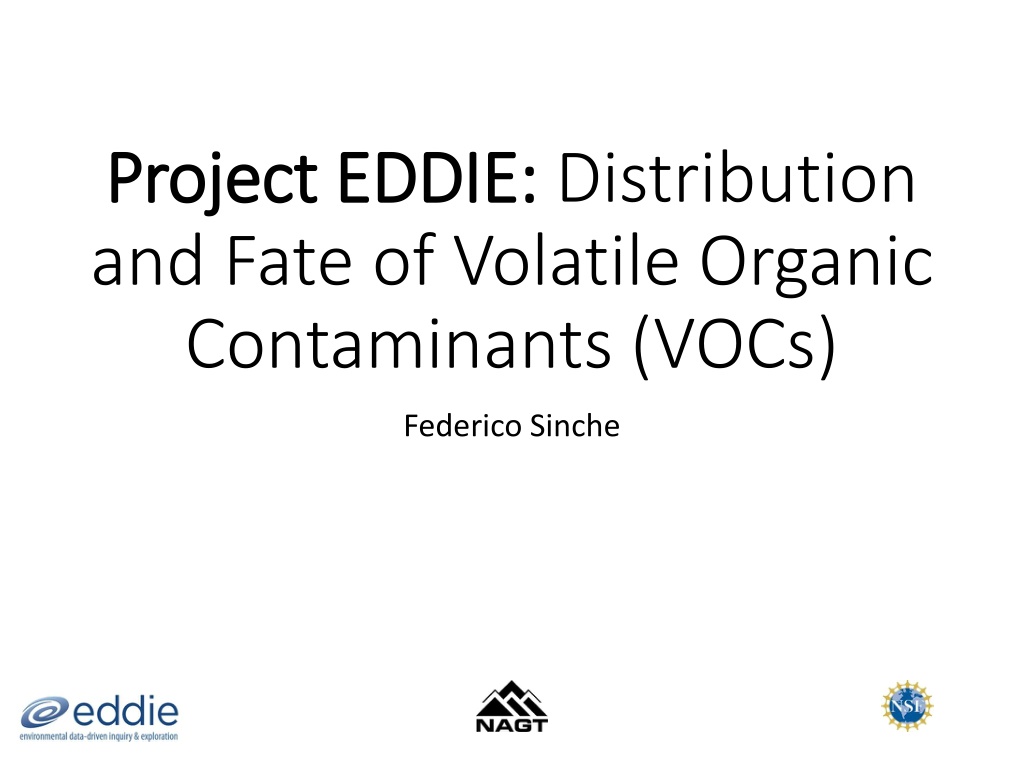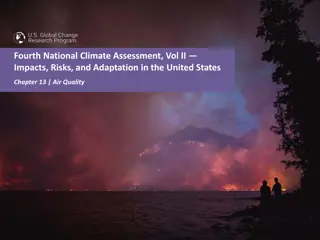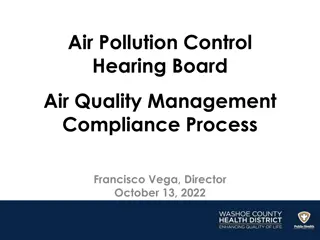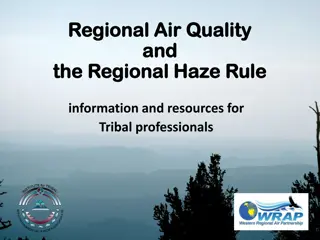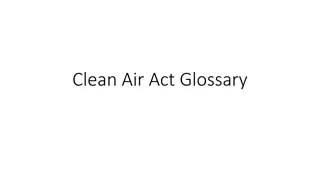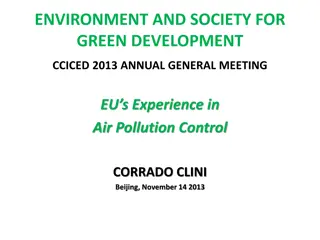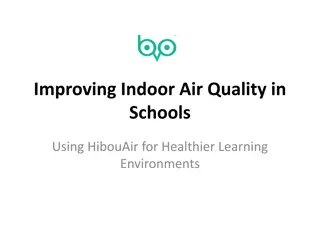VOCs: Distribution, Fate, and Impacts on Air Quality
This project delves into the distribution and fate of Volatile Organic Contaminants (VOCs), emphasizing their impact on air quality. It covers VOC sources, characteristics, health effects, and air pollution monitoring. The importance of regulating VOCs for human health and the environment is highlighted through detailed insights and datasets provided by the US EPA.
Download Presentation

Please find below an Image/Link to download the presentation.
The content on the website is provided AS IS for your information and personal use only. It may not be sold, licensed, or shared on other websites without obtaining consent from the author. Download presentation by click this link. If you encounter any issues during the download, it is possible that the publisher has removed the file from their server.
E N D
Presentation Transcript
Project EDDIE: Project EDDIE: Distribution and Fate of Volatile Organic Contaminants (VOCs) Federico Sinche
Air Pollutants US EPA Criteria Pollutants are regulated through human health-based and environmental criteria.
Air Pollutants: VOCs Volatile organic compounds (VOCs) are carbon-based compounds that participate in atmospheric photochemical reactions. VOCs can be applied to both indoor and outdoor air quality. *VOCs do not include particulate matter, CO, CO2, H2CO3, (NH4)2CO3, CO2-3
Air Pollutants: VOCs characteristics VOCs can be classified by their volatility and boiling point. The higher the volatility (lower the boiling point), the more likely the compound will be emitted from a product or surface into the air. *WHO: World Health Organization
National Air Pollution Monitoring For Activities A and B of the module, the following datasets will be provided by the students by the instructor: Illinois_VOCs_2010 Illinois_VOCs_2020 For Activity C of the module, the following datasets can be downloaded from the US EPA website: https://aqs.epa.gov/aqsweb/airdata/download_files.html #Annual The annual data on VOCs can be found under Toxics, Precursors, and Lead
National Air Pollution Monitoring This is how the datasets from the US EPA looks like: Types of air pollutants. Choose VOCs. Datasets organized by year. Choose 2020.
National Air Pollution Monitoring Datasets organized by year. Choose 2010.
VOC: Formaldehyde Chemical Structure Characteristics: colorless gas with a pungent, suffocating odor at room temperature. Acute health effects: eye, nose, and throat irritation and effects on the nasal cavity. Chronic health effects: EPA considers formaldehyde to be a probable human carcinogen and has ranked it in EPA s Group B1.
VOC: Formaldehyde Sources of formaldehyde in the air: Manufacturing of urea-formaldehyde resins, used in particleboard products Released from building materials and home furnishings Urea-formaldehyde product Emissions from power plants, manufacturing facilities, incinerators, and automobile exhaust.
VOC: Formaldehyde Concentrations of formaldehyde in urban areas reported ranging from 0.000011 to 0.000020 ppm National Institute of Occupational Safety and Health (NIOSH) recommended exposure limit for an 8- or 10-h time-weighted-average exposure and/or ceiling
VOC: Benzene Chemical Structure Characteristics: is a colorless liquid with a sweet odor. This highly flammable liquid dissolves in water. Acute health effects: headaches, respiratory tract irritation, drowsiness. Chronic health effects: disorders in the blood (aplastic anemia, leukemia). It is characterized as a known human carcinogen.
VOC: Benzene Sources of benzene in the air: Emissions from burning coal and oil Motor vehicle exhaust Smoking Evaporation from gasoline service stations Byproduct from industrial solvents
VOC: Benzene The American Industrial Hygiene Association s detection and recognition odor thresholds for benzene are 61 ppm and 97 ppm, respectively National Institute of Occupational Safety and Health (NIOSH) recommended exposure limit for an 8- or 10-h time weighted-average and/or ceiling
VOC: Acrolein Chemical Structure Characteristics: is a clear or yellow liquid with a burned, sweet, and pungent odor. Acute health effects: eye irritation, nose/throat irritation, decrease in respiratory rate. Chronic health effects: strong dermal irritant, prolonged respiratory congestion and eye, nose, and throat irritation.
VOC: Acrolein Sources of acrolein in the air: Acrolein is primarily used as an intermediate in the synthesis of acrylic acid and as a biocide Vapors from overheated cooking oil or grease Smoking tobacco Vehicle exhaust, oil- and coal-fired power plants
VOC: Acrolein The Agency for Toxic Substances and Disease Registry (ATSDR) has established an acute minimal reference level of 0.003 ppm National Institute of Occupational Safety and Health (NIOSH) recommended exposure limit for an 8- or 10-h time-weighted-average exposure and/or ceiling
